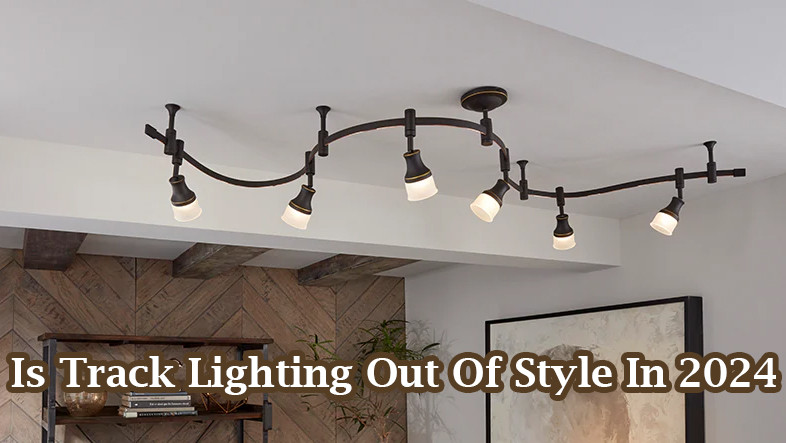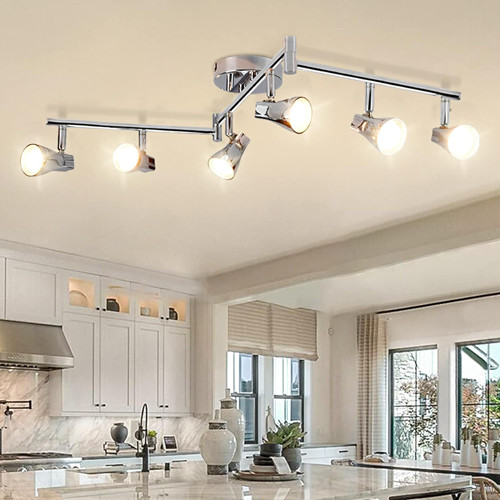
Track lighting has long been a popular choice for illuminating spaces with its versatility and modern aesthetic. However, as design trends evolve, some may wonder if track lighting still holds its place in 2024. Is track lighting out of style? In this post, we’ll explore the pros and cons of track lighting, its features, and whether it remains a stylish choice for contemporary spaces.
Pros of Track Lighting:
- Versatility: One of the biggest advantages of track lighting is its versatility. Track systems allow for adjustable fixtures that can be easily repositioned along the track, providing customizable lighting solutions for different needs and preferences. Whether you want to highlight artwork, create ambient lighting, or focus on specific areas, track lighting offers flexibility.
- Design Options: Track lighting comes in various styles, finishes, and fixture designs, making it suitable for a wide range of interior aesthetics. From sleek and minimalist designs to more ornate options, there’s a track lighting system to complement any decor style. Additionally, the availability of different bulb types, such as LEDs or halogens, allows for further customization.
- Directional Lighting: Unlike traditional ceiling fixtures that provide general illumination, track lighting offers directional lighting, allowing you to precisely target light where it’s needed. This feature is particularly beneficial for highlighting architectural features, accentuating focal points, or creating task lighting in kitchens or workspaces.
- Easy Installation: Installing track lighting is relatively straightforward, making it an attractive option for both homeowners and professionals. Most track systems come with simple mounting hardware and can be easily integrated into existing electrical setups, reducing installation time and costs compared to other lighting options.
- Energy Efficiency: With the widespread adoption of LED technology, track lighting has become more energy-efficient than ever. LED track fixtures consume less energy, last longer, and produce less heat compared to traditional incandescent or halogen bulbs, resulting in lower utility bills and reduced environmental impact.
Cons of Track Lighting:
- Limited Ambient Lighting: While track lighting excels at providing focused illumination, it may not be the best choice for primary ambient lighting in larger spaces. Due to its directional nature, track lighting may create shadows or uneven lighting if not adequately supplemented with other light sources, such as recessed fixtures or pendant lights.
- Visual Intrusion: Some homeowners may find track lighting systems visually intrusive, especially in spaces with low ceilings. The presence of track rails and exposed fixtures can detract from the overall aesthetic or architectural features of a room, particularly if not integrated seamlessly into the design.
- Maintenance: Although LED track fixtures require less maintenance than traditional bulbs, they may still require occasional cleaning and upkeep to ensure optimal performance. Dust and debris can accumulate on the track rails and fixtures over time, affecting light output and appearance, necessitating periodic cleaning and maintenance.
- Cost: While track lighting can be an affordable lighting solution for many applications, high-quality track systems and fixtures can be relatively expensive compared to standard ceiling fixtures or lamps. Additionally, the cost of LED track fixtures may be higher upfront, although the long-term energy savings can offset this initial investment.
- Design Limitations: While track lighting offers versatility in terms of adjustability and fixture styles, it may not suit every design scheme or architectural layout. Certain spaces may not accommodate track systems due to structural constraints or aesthetic preferences, limiting its applicability in some situations.
Features of Track Lighting:
- Adjustable Fixtures: Track lighting systems typically feature adjustable fixtures that can be rotated or tilted to direct light precisely where it’s needed. This feature allows for easy customization of lighting angles and intensity, making track lighting ideal for highlighting artwork, architectural details, or task areas.
- Track Styles and Finishes: Track lighting comes in various track styles, including straight, curved, or flexible tracks, allowing for seamless integration into different spaces and layouts. Additionally, track systems are available in a range of finishes, such as matte black, brushed nickel, or white, to complement various decor styles and color schemes.
- Compatibility with Smart Technology: Many modern track lighting systems are compatible with smart home technology, allowing users to control lighting settings remotely via smartphone apps or voice commands. Integration with smart lighting platforms such as Philips Hue or Lutron provides added convenience and flexibility in managing lighting scenes and schedules.
- Dimming Capabilities: Most track lighting fixtures are compatible with dimmer switches, allowing users to adjust the brightness levels to suit different activities or moods. Dimmable LED track fixtures offer additional energy savings and customization options, enhancing the versatility of track lighting in residential and commercial settings.
- Track Extensions and Accessories: Track lighting systems often feature modular designs that allow for easy expansion and customization. Additional track sections, connectors, and accessories such as pendant adapters or barn doors can be added to existing track layouts to accommodate evolving lighting needs or design preferences.
Conclusion: Is Track Lighting Out Of Style In 2024
In conclusion, while track lighting continues to offer many advantages in terms of versatility, adjustability, and energy efficiency, its suitability and popularity in 2024 may vary depending on individual preferences and design trends. While some may still embrace track lighting for its modern aesthetic and practical features, others may opt for alternative lighting solutions that better suit their specific requirements and design aesthetics. Ultimately, the decision to use track lighting should consider the pros and cons outlined above, as well as personal preferences, budget considerations, and the overall design vision for the space.
 WOWOW Faucets
WOWOW Faucets






您好!Please sign in